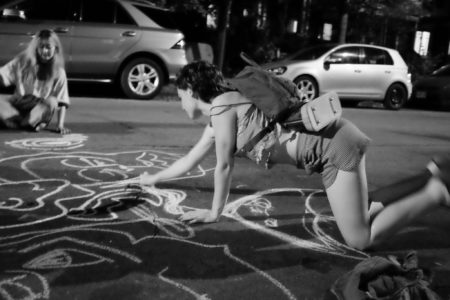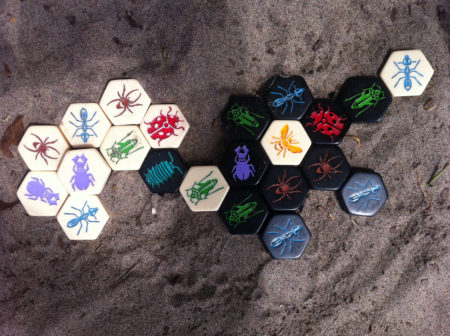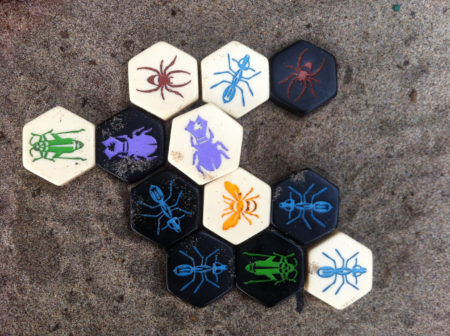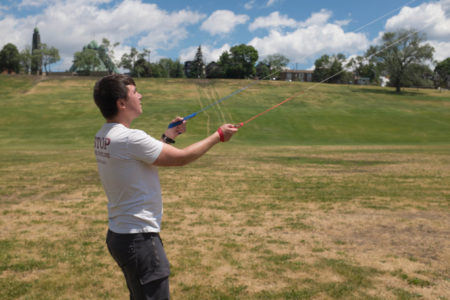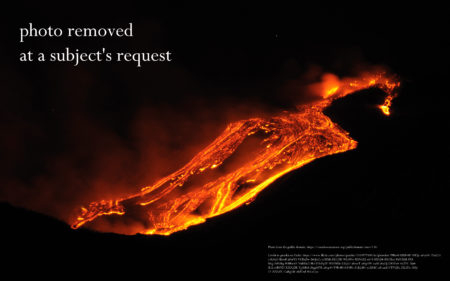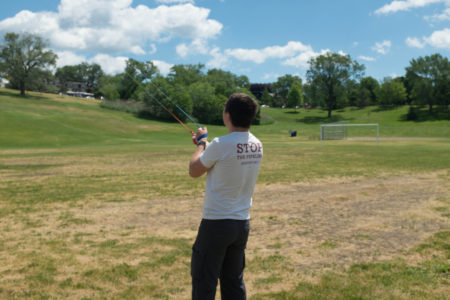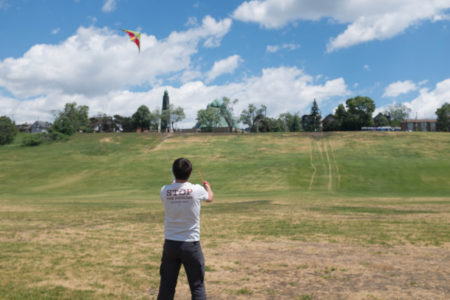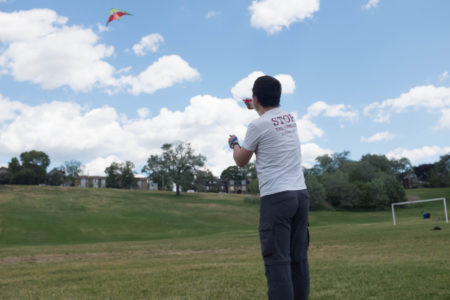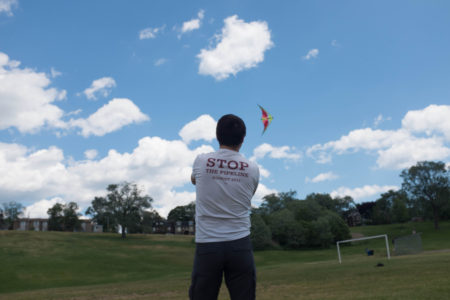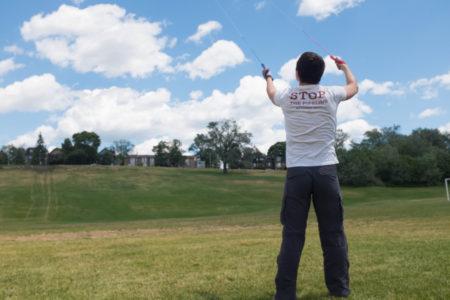Category: The outdoors
Hiking, camping, canoeing – if it’s an outdoor adventure, it should be under this heading
Fashion
Canada’s courts and Indigenous rights
One privilege during my time at U of T was to take Peter Russell’s class on Canada’s history as a series of incomplete conquests in 2013.
He taught the class for several years running to a mixed group of undergrads and grad students, using it partly to help him refine the new history of Canada he was writing.
That book has now been released: Canada’s Odyssey: A Country Based on Incomplete Conquests.
The paper I wrote for the class was called “The judiciary in the lead: Aboriginal politics in Canada’s post-Charter era“. Russell addresses the subject in the finished book:
The Supreme Court of Canada, as the Powley case demonstrates, continues to be a major player in the resurgence of aboriginal peoples. This is true in other common law countries with colonized native peoples within. The high courts of Australia, New Zealand, and the United States are now playing an important role in shaping the rights of Indigenous peoples in their countries. Indeed the Supreme Court of Canada’s decision in Calder, which was instrumental in changing Canada’s Aboriginal policy in the 1970s, was the crucial precedent in the Australian High Court’s Mabo decision, which changed Australian policy in the 1990s. For Indigenous peoples, as small minorities within democratic countries, resorting to the courts to vindicate rights and defend interests makes good sense, especially when the courts are rooted in the common law tradition of judicial independence and law development, and their judges are no longer soaked in the racism of earlier settler generations. The courts in all four common law countries, in varying degrees, have been relatively liberal in responding to the legal claims of Aboriginal peoples. Their decisions have often been out front of elected politicians, forcing changes in the policies of their governments. But their agency as instruments of full decolonization is limited. They are still the “white man’s courts,” not only in their composition, but also in the justices’ belief that Indigenous peoples are subject to the overriding sovereignty of the settler state.
The Supreme Court of Canada has made its most important contributions to advancing Aboriginal rights in decisions relating to native title. The Court’s 1997 decision in Delgamuukw confirmed that native title was one of the existing Aboriginal rights recognized in section 35 of the Constitution Act, 1982, and spelled out some of its features. Native title is communal, rather than individual. It confers on the society that it has full ownership of the land and its resources, including subsurface minerals. That was the good news. But much of the Court’s treatment of native or Aboriginal title has dealt with its limitations. First, Aboriginal people cannot sell any part of their lands on the private market; native title land can only be sold to the Crown — that is, the Government of Canada. A second limitation smacks of paternalism: the Aboriginal people that hold native title can develop the land in non-traditional ways, providing a development does not undermine their historical attachment to the land. The Supreme Court gave two examples of what it would not allow a native community to do to its own lands: strip-mine a hunting ground or pave over a burial ground for a parking lot. A third limitation underlines the continuing colonialism in the Court’s thinking. In common law, native title is understood as a “burden” on the Crown’s sovereignty, and in discharging the Crown’s — that is, the federal or provincial government’s — responsibilities to the larger community, there might be compelling and substantial circumstances that could make an infringement of native title justifiable. Chief Justice Lamer, who wrote the principal majority opinion, asserted somewhat casually that “the development of agriculture, forestry, mining, hydroelectric power, and general economic development of the interior of British Columbia, protection of the environment or endangered species, the building of infrastructure and the settlement of foreign populations” — any of these — “can justify the infringement of aboriginal title.” The Court’s purpose in fashioning this new law, the chief justice explained, was “to reconcile the pre-existence of aboriginal society with the sovereignty of the Crown.”
…
A duty to consult native owners and try to accomodate their interests before pushing through projects on their lands might be better than nothing, but it is still a far cry from affirming Aboriginal peoples’ constitutional right to protect and develop their lands and resources.
Russell, Peter. Canada’s Odyssey: A Country Based on Incomplete Conquests University of Toronto Press, 2017. p. 434–6
High Park family photos
In part to bring family members together for Father’s Day, I invited my cousins for some family portraits and a picnic in High Park.
My cousin Katrusia showed up with some of the clothing she has recently sewn, along with my cousin Tamara, her husband, and their children Mykyta (who I photographed before, including being baptized) and Adrian.
Spring update
I had a good wander around Toronto today. All these photos were taken with my Fuji X100s — perhaps the best camera smaller than a hardback book.
The most exciting thing going on is planning several possible trips: one to Ottawa in a couple of days, a possible trip to Algonquin Park, and a very exciting possible trip to B.C. and the Haida Gwaii.
Good Friday parade
This afternoon I went with Tristan to watch the Good Friday parade in Little Italy.
Wandering Home: A Long Walk Across America’s Most Hopeful Landscape
My family in Vermont sent me Bill McKibben’s 2005 book (updated in 2014) as a Christmas gift. In it, he recounts a meandering trek through the Lake Champlain region of the Adirondacks. It’s part nature writing, partly an account of the history of the region and the ways his neighbours are tying to earn a living, and partly a meditation on the nature of wilderness and how it relates to human life.
McKibben talks about small-scale farmers and winemakers trying to compete against giant agribusiness corporations by securing premium prices for local food; students keen to establish major vegetable gardens at local colleges; debates about what to think and do about invasive species; strategies for social change; park rangers burning down the illegal cabins of hunters; and the ruin and ruckus caused by all-terrain vehicles and Jet Skis.
The book fits into a theme of environmentally-minded people finding ways to undertake major wilderness excursions, which I also saw among friends before leaving Facebook. I can see the plausibility in how time invested this way can help control the adverse emotions which accompany environmental activism in the face of a public wedded to consumerism and corporations and politicians vigorous in their defence of the status quo. At the same time, it’s hard to undertake when I am always behind on PhD requirements and never really financially secure enough for vacations.
In any event, the book is another good demonstration of McKibben’s eloquence and constant focus on the big questions facing humanity. I hope one day I will get to visit some of the landscape he describes.
Hive on the beach
Gorgeous stormchasing footage
Vorticity (4K) from Mike Olbinski on Vimeo.
Dancing with the sky
I find that my Prism Quantum two-line kite is too frustrating to fly in winds of less than 16 knots (kn). The ideal range is 16-25 kn, with the wind consistent in power and coming from a consistent direction. That’s a rare situation indeed in Toronto, where winds are almost never so strong and tend to be turbulent and inconsistent when they are. Because of that, I check Windfinder.com for the Toronto Island Airport to spot days which may be plausible for good kiting.
The forecast for today looked promising, so I went with my friend Nada to fly a bit in Riverside Park. It’s not as good a kiting location as Hanlan’s Point beach, but it’s a lot easier to reach and depart from and offers more options in the event of the summer downpours and thunderstorms that often accompany windy spring days.
All photos of me are by Nada Khalifa.
One of my favourite things about kiting is teaching it to less experienced flyers. Anyone who seems interested and heavy enough to safely use this particular kite in these particular wind conditions is encouraged to give it a try. All told with this kite — in a variety of locations around Toronto — I have helped at least 50 people take their first flight with a two-line kite, with inductees ranging from about ten years old to well over seventy. I make a special effort to encourage women of all ages to try it, since there seems to be some general set of social expectations that makes men and boys more willing to give it a try.
I feel like a few years of intermittent kiting (along with related reading, video tutorials, and inspiring acts of lunacy) have taught me a fair bit about aeronautics in an applied sense.
I tell my Massey friends that kiting is a bit like sailing for poor people. The Quantum has carbon fibre (or, apparently, “Pultruded Carbon“) spars and a sail made of material that would be suitable for a sailboat. Kite lines are highly specialized polymers. A kite lets you grab a little piece of the wind and feel how it’s moving across a fairly large area. As well as a meditative activity, it’s a cybernetic one: a complex interface between your body, a machine, and changing environmental conditions.
Early when I was reading about more advanced kites, I thought that more power and more lines (there are lots of four and five line kites) would probably produce a more sophisticated or interesting flying experience. Having seen people using large but much less maneuverable parasail-type kites for kiteboarding, I am quite happy with the flexibility and acrobatic potential of a two-line delta style kite like the Quantum.
Concepts from kiting — about airflow, turbulence, attitude, and so on — seem generalizable to craft of many kinds. Indeed, thinking about attitude in the specific sense of simulated spacecraft in Kerbal Space Program has helped me disentangle some of the complex elements involved in precisely maneuvering a flying airfoil through a turbulent mass of air. Direction vector relative to the wind is crucial, as is responding to abrupt changes in air flow.
I would love to get a small soft kite with no hard parts, small enough to pack into the cargo pocket of my trousers or the poacher’s pocket in my winter jacket. With a light one-line kite, it would be possible to do a bit of flying whenever I happen to find myself in a decent wind. The Prism EO Atom is an intriguing possibility of this sort, though it’s hard to gauge how compact it is. Unlike most single-line kites, it offers a bit of variety in how it flies because you can pull it downward and watch it tumble and recover in interesting ways.
My sense is that kiting has therapeutic value for my chronic shoulder injury. The traction is probably similar to what physiotherapy elastic bands are meant to produce, and it’s a whole lot more fun.
With very stable wind, kiting is an excellent solitary activity. I just start a set of lectures rolling on my iPod and keep going for as long as the wind supports me. This tends to work best during adverse weather — either days well below 0 ˚C or those interspersed with thunderstorms. In those conditions, good flying locations tend to be thinly populated. When the weather is fine, you are sometimes interrupted by (welcome) inquiries from people who want to give it a try, unwelcome complaints from the maddeningly large subset of the population who are reflexively anti-kite, and the thoughtless interference of people who aren’t paying attention to what is happening above and around them.
With variable wind, it’s highly useful to have a friend to help you re-position the kite for launch after a crash or a failure of the wind.
I love the paganism of kite flying: the immediate connection with natural forces vaster and more powerful than you, and efforts to work alongside them rather than seek to dominate them or escape from their power.

